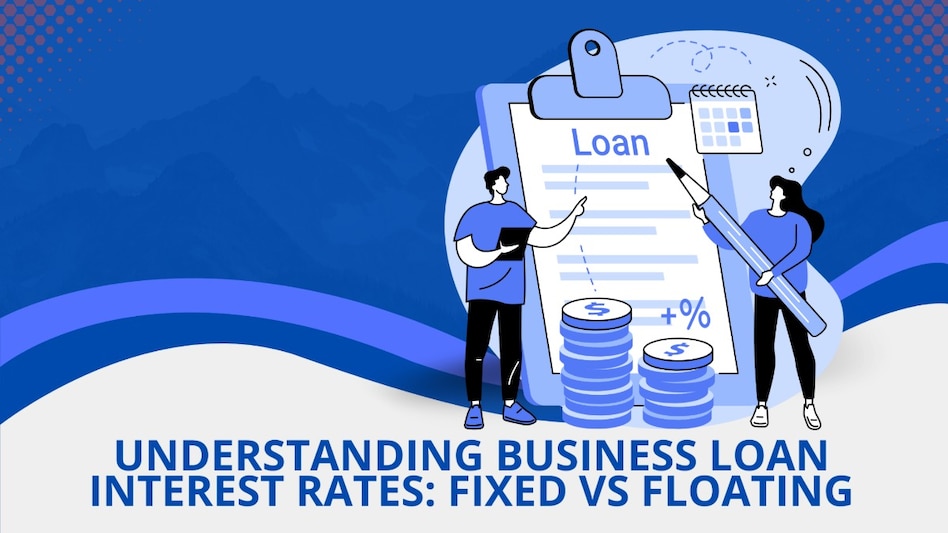If you are planning to take a business loan, you probably have heard of the terms fixed and floating interest rates. These terms determine whether you are going to repay more over time and how consistent your payments will be. This guide will help you distinguish between fixed and floating business loan interest rates by exploring their benefits and downsides.
What is a Business Loan Interest Rate?
An instant business loan interest rate is the cost of borrowing funds. It refers to the additional amount you pay on top of the loan principal. This rate can either be fixed or floating.
- Fixed Interest Rate: This rate remains constant from the beginning to the end of the loan.
- Floating Interest Rate: This rate may vary depending on market conditions over time.
Understanding these options can significantly impact how much you pay back and how you manage your finances.
Benefits of Fixed Interest Rates
Fixed interest rates offer the following advantages:
- Financial Security: Monthly payments remain consistent, reducing uncertainty about future payments. This is especially helpful for individuals with fixed incomes or those who prefer predictable expenses.
- Predictable Planning for Long-Term Goals: Predictable payments make it easier to strategize long-term financial goals, such as savings, investments, or other commitments.
- Easy Comparison of Loans: Fixed rates simplify loan comparisons since varying rates do not factor into the analysis.
Disadvantages of Fixed Interest Rates
The drawbacks of fixed interest rates include:
- Higher Initial Costs: Fixed rates are often higher than floating rates, which might increase upfront payments.
- Lack of Flexibility: Fixed rates do not decrease even if market rates decline, potentially leading to missed opportunities for savings.
Benefits of Floating Interest Rates
Floating interest rates provide the following advantages:
- Lower Starting Rates: Generally lower at the beginning compared to fixed rates, leading to reduced initial payments.
- Reduced Borrowing Costs: If market rates decrease, your interest rate and monthly payments will also reduce.
- Flexibility: Lenders often offer more flexible terms with floating-rate loans, which is beneficial for businesses with irregular cash flows.
Disadvantages of Floating Interest Rates
The disadvantages of floating rates include:
- Unpredictable Payments: Changes in market conditions can lead to fluctuating monthly payments.
- Market Risks: An increase in interest rates can raise repayment amounts, potentially becoming unaffordable.
- Challenging Budgeting: Varying payments make it harder to plan finances accurately.
| Loan Amount |
Starting Rate |
Increased Rate (After 2 Years) |
Monthly Payment (New) |
Total Interest Over 5 Years |
|---|
| ₹1,00,000 |
9% |
11% |
₹2,195 |
₹30,100 |
| ₹1,00,000 |
8% |
10% |
₹2,163 |
₹28,960 |
Choosing Between Fixed and Floating Rates
When deciding between fixed and floating interest rates, consider the following:
- Risk Tolerance: Fixed rates are suitable for those who value stability, while floating rates are better for those comfortable with market changes.
- Market Trends: Fixed rates are advantageous when rates are expected to rise, while floating rates benefit from declining market rates.
- Loan Tenure: For short-term loans, floating rates are often suitable, but for long-term loans, fixed rates provide more certainty.
- Budget Flexibility: Choose floating rates if your budget can handle fluctuations; otherwise, opt for fixed rates for consistent payments.
| Feature |
Fixed Interest Rate |
Floating Interest Rate |
|---|
| Rate Stability |
Remains constant |
Changes with market trends |
| Initial Cost |
Higher |
Lower |
| Flexibility |
Low |
High |
| Impact of Market Changes |
No impact |
Affected by market trends |
| Budget Planning |
Easier |
Harder |
Conclusion
Understanding the difference between fixed and floating business loan interest rates is crucial for effective loan management. Fixed rates offer stability, making them ideal for predictable budgeting, while floating rates can provide savings in favorable market conditions. Your choice should align with your financial goals, risk tolerance, and market outlook to ensure the best loan terms for your needs.
 Lower Starting Rates: Floating interest rates are generally lower at initiation than fixed rates, meaning lower starting payments.
Lower Starting Rates: Floating interest rates are generally lower at initiation than fixed rates, meaning lower starting payments. Lower Starting Rates: Floating interest rates are generally lower at initiation than fixed rates, meaning lower starting payments.
Lower Starting Rates: Floating interest rates are generally lower at initiation than fixed rates, meaning lower starting payments.